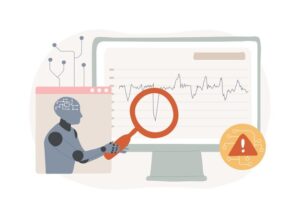Introduction
In the ever-evolving world of cybersecurity, data breaches and leaks have become a common occurrence. One such incident that has recently come to light involves thejavasea.me and the AIO-TLP (All-In-One Threat Landscape Platform). This article delves deep into the details of thejavasea.me leaks AIO-TLP, exploring the implications, the data involved, and the broader impact on cybersecurity.
What is thejavasea.me?
Thejavasea.me is a website that has gained notoriety for hosting and distributing leaked data. It operates in the shadowy corners of the internet, often associated with cybercriminals and hackers. The site is known for its extensive database of leaked information, ranging from personal data to corporate secrets. Thejavasea.me has been linked to several high-profile data breaches, making it a significant player in the world of cybercrime.
Understanding AIO-TLP
AIO-TLP, or All-In-One Threat Landscape Platform, is a sophisticated tool used by cybersecurity professionals to monitor and analyze threats. It aggregates data from various sources, providing a comprehensive view of the threat landscape. AIO-TLP is designed to help organizations identify vulnerabilities, predict potential attacks, and implement effective countermeasures. However, the recent leak involving AIO-TLP has raised serious concerns about the security of such platforms.
The Leak: What Happened?
The leak involving thejavasea.me and AIO-TLP was first reported by cybersecurity experts who noticed a significant amount of sensitive data being circulated on dark web forums. The data included detailed threat intelligence reports, vulnerability assessments, and even source code from AIO-TLP. The leak was attributed to a breach in the AIO-TLP’s security infrastructure, which allowed hackers to gain unauthorized access to its database.
The Data Involved

The data leaked in this incident is extensive and highly sensitive. It includes:
- Threat Intelligence Reports: These reports contain detailed information about emerging threats, attack vectors, and potential vulnerabilities. They are used by organizations to stay ahead of cybercriminals.
- Vulnerability Assessments: These assessments provide a comprehensive analysis of an organization’s security posture, identifying weaknesses that could be exploited by attackers.
- Source Code: The leaked source code from AIO-TLP is particularly concerning, as it could be used by hackers to develop new attack methods or to reverse-engineer the platform’s defenses.
- User Data: The leak also includes personal information of AIO-TLP users, such as email addresses, passwords, and other sensitive details.
Implications of the Leak
The implications of thejavasea.me leaks AIO-TLP are far-reaching and multifaceted. Here are some of the key concerns:
1. Compromised Threat Intelligence
The leak of threat intelligence reports undermines the very purpose of AIO-TLP. With this information in the hands of cybercriminals, organizations may find it increasingly difficult to protect themselves against emerging threats. The leaked data could be used to launch targeted attacks, bypassing existing security measures.
2. Increased Vulnerability
The exposure of vulnerability assessments means that organizations’ weaknesses are now public knowledge. Cybercriminals can use this information to exploit vulnerabilities before they are patched, leading to a surge in successful attacks.
3. Source Code Exploitation
The leaked source code is a goldmine for hackers. It allows them to understand the inner workings of AIO-TLP, potentially leading to the development of new attack vectors or the creation of counterfeit versions of the platform designed to deceive users.
4. Privacy Concerns
The inclusion of user data in the leak raises serious privacy concerns. Affected individuals may face identity theft, phishing attacks, and other forms of cybercrime. The breach also erodes trust in AIO-TLP and similar platforms, making users wary of sharing sensitive information.
The Broader Impact on Cybersecurity
Thejavasea.me leaks AIO-TLP incident is not just a standalone event; it has broader implications for the cybersecurity landscape. Here are some of the key areas affected:
1. Trust in Cybersecurity Platforms
Trust is a cornerstone of cybersecurity. When a platform like AIO-TLP, which is designed to protect against threats, is itself compromised, it shakes the confidence of users. Organizations may become hesitant to rely on such platforms, opting instead for in-house solutions or alternative providers.
2. Regulatory Scrutiny
Data breaches often attract the attention of regulators. The AIO-TLP leak could lead to increased scrutiny of cybersecurity platforms, with potential implications for compliance and data protection laws. Organizations may face stricter regulations and higher penalties for data breaches.
3. Innovation and Development
The leak of source code and other proprietary information could stifle innovation in the cybersecurity industry. Companies may become more guarded about their intellectual property, slowing down the development of new tools and technologies. Additionally, the fear of leaks may deter investment in cybersecurity startups.
4. Cybersecurity Workforce
The incident highlights the need for a skilled and vigilant cybersecurity workforce. Organizations may invest more in training and hiring cybersecurity professionals to prevent similar breaches. However, the demand for such professionals already outstrips supply, leading to a competitive job market and higher salaries.
Mitigating the Impact
In the wake of thejavasea.me leaks AIO-TLP, it is crucial for organizations to take proactive steps to mitigate the impact. Here are some recommended actions:
1. Conduct a Thorough Security Audit
Organizations should conduct a comprehensive security audit to identify and address vulnerabilities. This includes reviewing access controls, encryption methods, and incident response plans.
2. Enhance Data Protection Measures
Implementing stronger data protection measures, such as multi-factor authentication, encryption, and regular data backups, can help safeguard sensitive information.
3. Monitor for Unusual Activity
Continuous monitoring of network activity can help detect and respond to potential threats in real-time. Organizations should invest in advanced threat detection tools and employ skilled analysts to interpret the data.
4. Educate Employees
Human error is a common cause of data breaches. Educating employees about cybersecurity best practices, such as recognizing phishing attempts and using strong passwords, can reduce the risk of a breach.
5. Engage with Cybersecurity Experts
Collaborating with cybersecurity experts can provide organizations with the insights and tools needed to enhance their security posture. This includes participating in threat intelligence sharing initiatives and staying informed about the latest threats.
The Future of AIO-TLP
The future of AIO-TLP is uncertain in the wake of thejavasea.me leaks. The platform’s reputation has been tarnished, and it faces an uphill battle to regain the trust of its users. However, this incident also presents an opportunity for AIO-TLP to demonstrate its resilience and commitment to security.
1. Rebuilding Trust
AIO-TLP must take immediate and transparent steps to address the breach. This includes conducting a thorough investigation, communicating openly with users, and implementing stronger security measures. Rebuilding trust will require a sustained effort over time.
2. Enhancing Security
The platform should invest in advanced security technologies, such as artificial intelligence and machine learning, to detect and prevent future breaches. Regular security audits and penetration testing can help identify and address vulnerabilities.
3. Expanding Threat Intelligence
AIO-TLP can enhance its value proposition by expanding its threat intelligence capabilities. This includes incorporating data from a wider range of sources, improving the accuracy of its assessments, and providing actionable insights to users.
4. Collaborating with the Cybersecurity Community
Collaboration with the broader cybersecurity community can help AIO-TLP stay ahead of emerging threats. This includes participating in information-sharing initiatives, contributing to open-source projects, and engaging with industry experts.
Conclusion
Thejavasea.me leaks AIO-TLP incident serves as a stark reminder of the vulnerabilities inherent in the digital age. It underscores the importance of robust cybersecurity measures and the need for constant vigilance. While the immediate impact of the leak is concerning, it also presents an opportunity for the cybersecurity industry to learn, adapt, and evolve. By taking proactive steps to enhance security, organizations can better protect themselves against future threats and ensure the integrity of their data.
As the digital landscape continues to evolve, incidents like thejavasea.me leaks AIO-TLP will likely become more common. However, with the right strategies and a commitment to security, organizations can navigate these challenges and emerge stronger. The key lies in staying informed, being proactive, and fostering a culture of cybersecurity awareness.
thejavasea.me leaks AIO-TLP is a wake-up call for the cybersecurity industry. It highlights the need for continuous improvement, collaboration, and innovation in the face of ever-changing threats. By learning from this incident and taking decisive action, we can build a more secure digital future for all.

